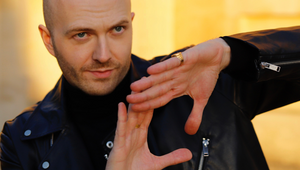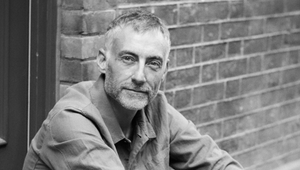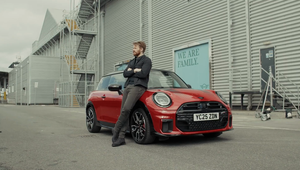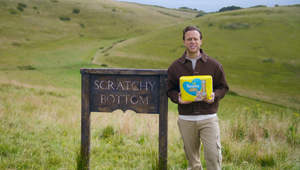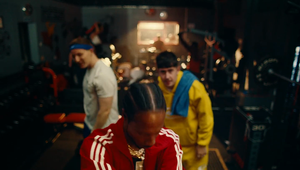
Your Shot: Russian Standard’s ‘Incredible Story’

Russian Standard Vodka’s ‘Incredible Story’ is an epic yarn, as is the production story behind it. A series of bumpy journeys on potholed Russian roads, last minute, overnight flights and an incident with flying sandwiches. For Great Guns director Calum Macdiarmid, though, it was a chance to let loose on all the creative passions that make him tick. The final film is a real beauty, combining journeying narrative with a series of technically delicious shots. Macdiarmid tells all to LBB’s Addison Capper.
LBB> What was the initial brief like and what appealed to you about it?
CM> The core brief was to make something that was epic in its storytelling and would capture the moment when science meets awe.
As an artist I'm constantly experimenting with new ideas and techniques to create something visually unusual. My works spans painting, photography, animation and filming. This project was perfect as I had so many different mediums to play with – I finally had an excuse to combine all my passions.
LBB> What was pre-production like for the film?
CM> Pre-production was intense. The client had a very specific idea of how they would like to be represented and discussed every single detail of the plan. Whilst shooting in Russia later on I found a copy of ‘War and Peace’ in my hotel room and remember thinking that it didn't differ too much in size to the treatment we finally presented. It’s fair to say a few late nights were had.
LBB> National Geographic TV star, Jason Silva, fronts the spot - why was he chosen to do so and how did you coax the perfect performance out of him?
CM> Luke White (Creative Director at My Agency) had already sold the concept of science meets awe to RSV (Russian Standard Vodka), so when he found one of Jason's films on Vimeo it just clicked. Jason and I had mutual friends in LA already so we were already looking forward to meeting up. He already had experience of working in a very different, more personal way from previous productions.
The team knew this was going to be a massive studio shoot, so it was important that he was relaxed about the project. Great Guns sent us for a few drinks and when we discovered how much we had in common, I knew we were going to have a lot of fun and produce something cool.
His performance on the days were incredible, I've never seen anything like it. Someone called him the ‘motion control’ of presenters. He would read a three minute script without any stumbling and manage to adjust its timing so that it came in one second longer or shorter depending on your request.
LBB> There are lots of different shots that require different directorial techniques – how did you keep the message and aesthetic consistent throughout?
CM> Luke was very good at looking after the narrative. As he'd written it, he took special care to make sure it communicated effectively. Various things like grading, sound bed and Jason's voiceover helped seal the film into its look. Having said that, I think it’s important for longer informative films like this one to have moments that slightly jump out from previous scenes, so as to keep the audience surprised and guessing throughout.
LBB> How long was the shoot and where did it all take place?
CM> The shoot was about 11 days for myself. Nine of them were in London and the other two were in an obscure field south of St Petersburg. That side of things was pretty tough because we had to find the correct fields at the right time of harvest. We caught a last minute overnight plane and then drove for five hours through potholed Russian roads to find the field in which we set up shop for two days.
We used a helicopter to create the wind-waves in the fields. My favourite moment was when I found myself watching a monitor in the middle of the field whilst trying to eat lunch. The rotor blade was causing half of the field and most of my lunch to fly through the air, whilst we continued to film and eat!
LBB> How much was captured in camera and how much in post?
CM> I was keen to capture as much as possible in camera. I'm sure Liam, our SFX supervisor, got bored of my constant 'it has to be real!' comments. We used a lot of oils, water, powder, speakers, glass beads and underwater explosions to achieve most of our effects. And if we couldn't achieve something we would always shoot reference plates for the CGI guys.
LBB> What were the biggest challenges during the production and how did you overcome them?
CM> One of the biggest challenges was timing. The producers, Tim Francis and Sheridan Thomas, definitely had a big job trying to squeeze all the shoot days that were necessary into the schedule and managing to keep tabs on everything. Whilst I was shooting Jason in a London studio, we also had Ron Fricke in Russia shooting the St Petersburg shots. I don’t think there's much you can do in a situation like that, apart from throw a lot of manpower at it and work hard.
Another key factor was being able to adapt to client feedback because Roustam Tariko, the man who owns RSV, is very hands on in how he likes his brand to be portrayed. The trick was to shoot twice as much footage as necessary in varied situations, so that we always had another option to show him.
Credits
Agency: My Agency
Creative Director: Luke White
Managing Partner: Nick Wright
Agency Producer: Lisa Colchester
Director: Calum Macdiarmid
Production Company: Great Guns
Executive Producers: Laura Gregory & Sheridan Thomas
Producer: Tim Francis
Line Producer (Russia): Ilya Medovy
Director of Photography (St Petersburg) : Ron Fricke
Director of Photography (London): Jean Poisson
Director of Photography (Shimsk): Pasha Kapinos
2nd Unit and Stills: Josh Trigg
Production Designer: Jan Walker
Special Effects: The Machine Shop
Editor: James Demetriou at The Chop House
Post Production: Mainframe
Stock Footage Search: Jody Winterbottom
Iceberg Stock: Enrique Pacheco, Aaron Craig,
Yannick Calonge, Humbi Entress, Jan Frojdman.
Moon Stock Shot: NASA
Eagle Shot : Framepool
Bear Shot: BBC NHU
Music: Diederik Van Middelkoop at Massive Music










